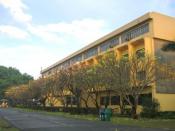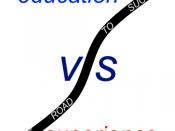Education Systems in Australia and in the Philippines
Submitted By: Angelu Tolentino
Education is the process by which a person gains knowledge. It is considered as one of the essential needs for human survival, that is why most countries' future depends on educating its people. The financial/economical issues and traditions lead countries to different educational routes. Although Australia and the Philippines may have some similarities, both countries' education systems differ in many ways.
What makes the primary difference is that the Philippine government do not have as much funds and budget as Australia do. Australia being one of the leading countries with high economy can provide a free, high standard and accessible education for its citizens. On the other hand, countries in the third-world country, the Philippines for example, can only provide a low budget for education although the Department of Education receives the biggest budget allocation from the government funds.
As a result, not everyone in this country is able to study due to geographical, financial or social barriers. For example, a child living in a remote area might have to cross the river, the other side of the mountain or walk a few kilometres just to be able to learn. A typical public school in overcrowded areas or provinces may also include a classroom with fifty students sharing with at least a book. These situations happen everyday, but not in a wealthy country like Australia. This great deprivation leads to the very high regard of Filipinos for education.
Another difference is the structure of the education system. In Australia, it is a compulsory education of seven years in primary school and five years in high school. On the other hand, the new K-twelve programme in the Philippines adds two more years for the senior high school, which now...


